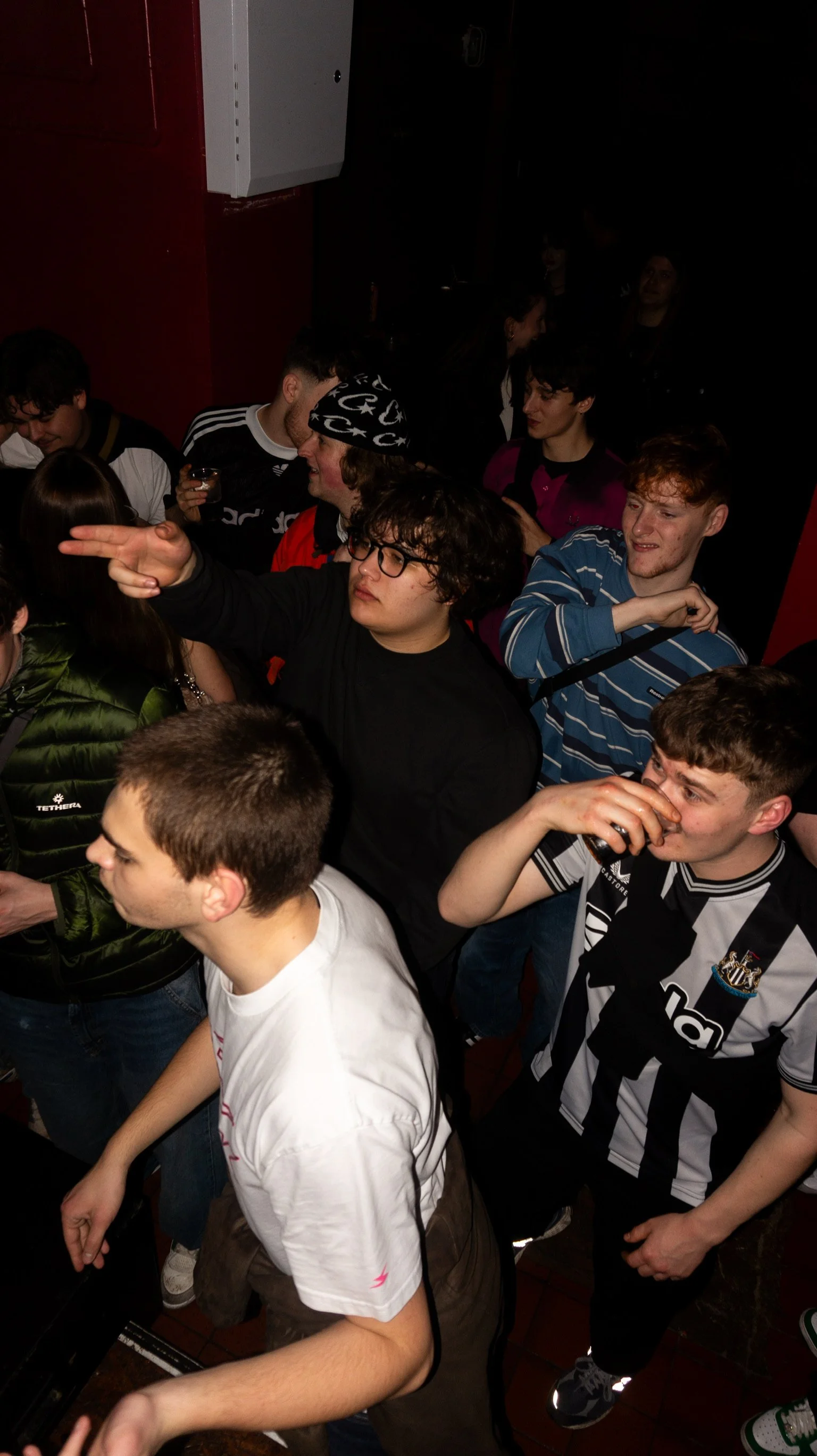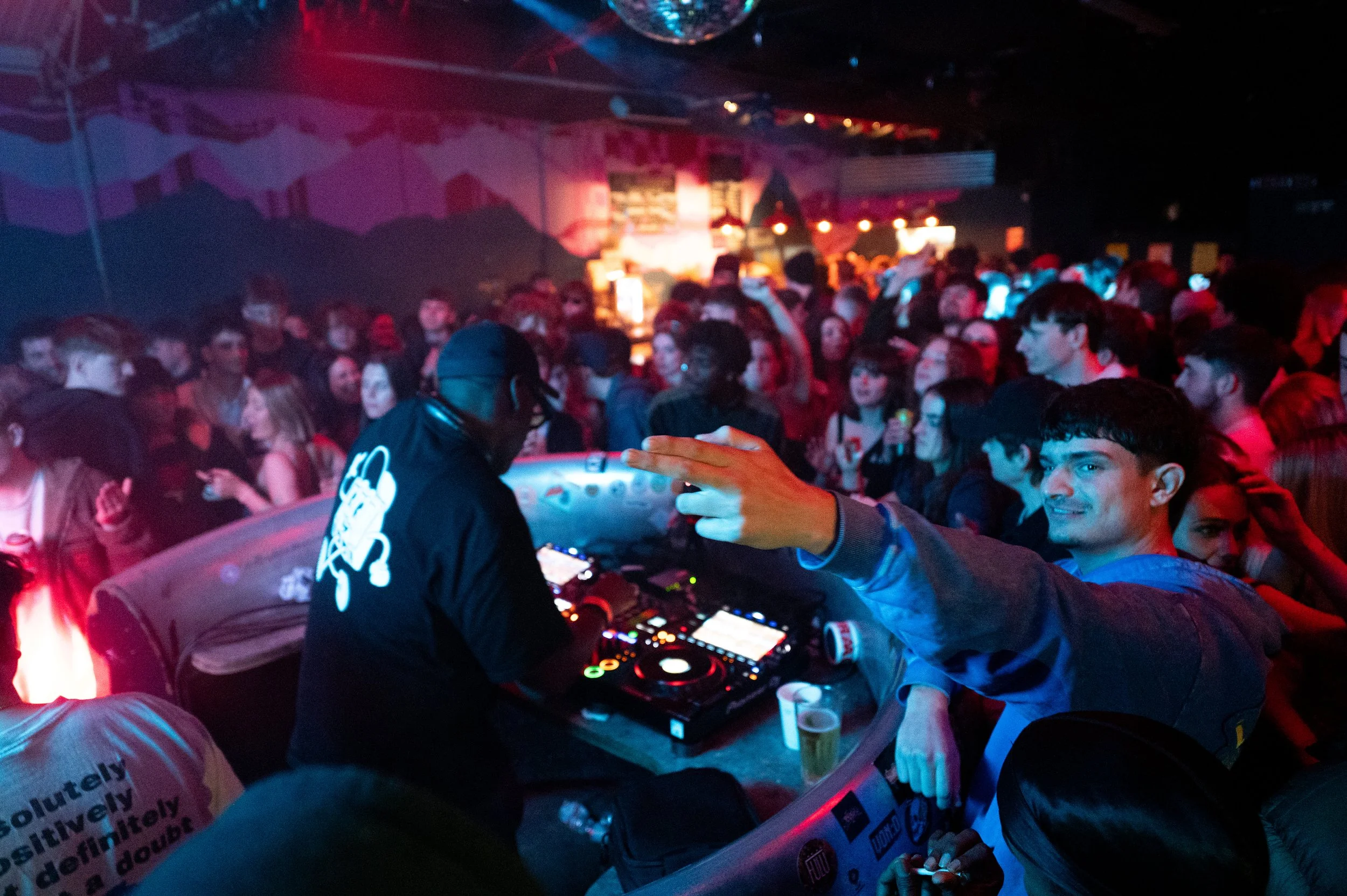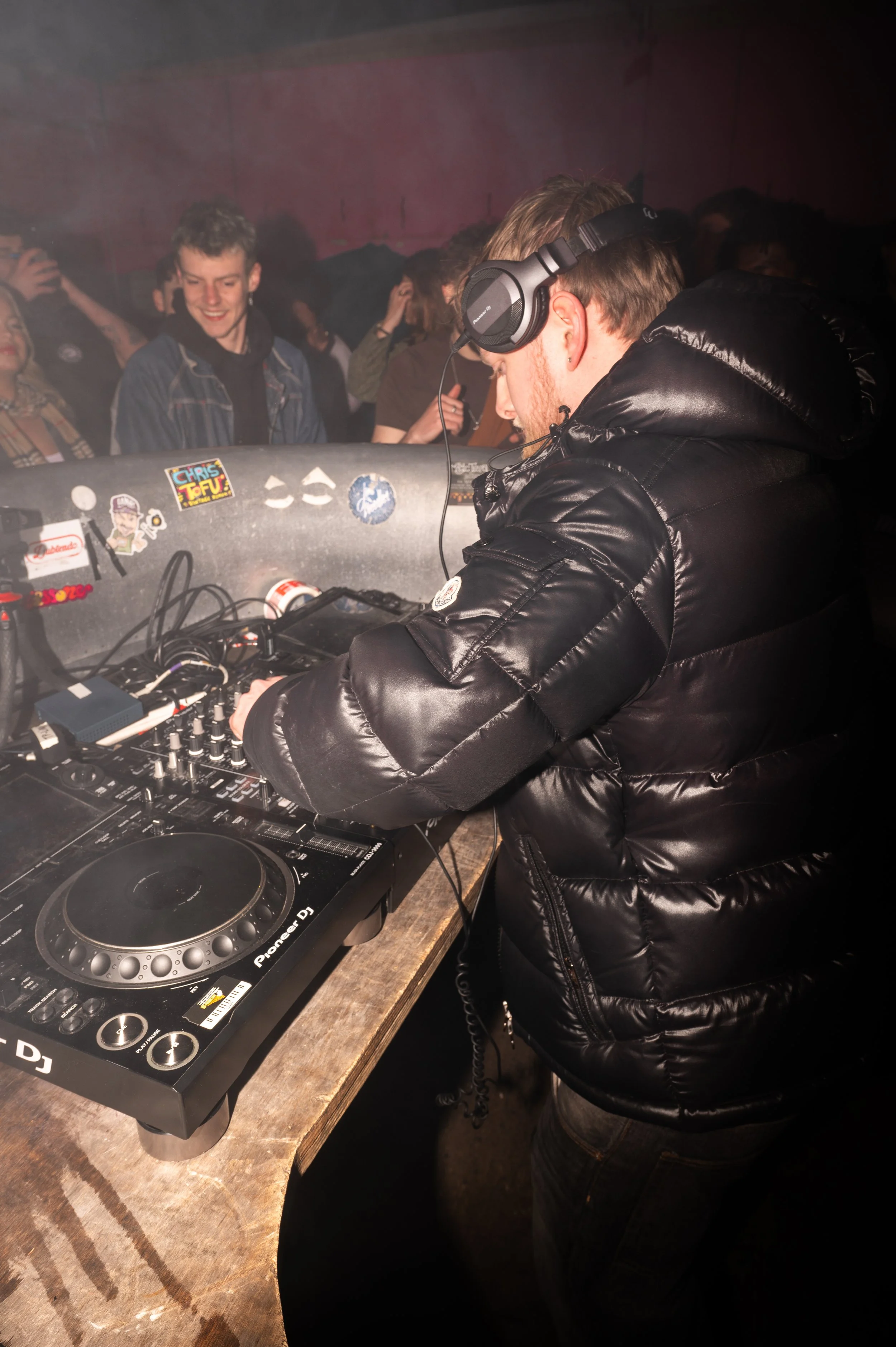THE SCENE
Why it matters.
Nightlife is more than late nights and loud music — it's a vital cultural and social force. For many, it provides a sense of identity, belonging, and creative expression that can't be found elsewhere. Grassroots venues and independent events offer safe spaces for experimentation, connection, and community — especially for marginalised groups, including LGBTQ+ people, people of colour, and working-class youth. These scenes create room for voices and genres that don’t fit into the mainstream.
In cities like Bristol, nightlife has always been a cultural heartbeat — fuelling innovation in music, from trip-hop and drum and bass to UK garage and grime. Events and venues nurture the next generation of artists, DJs, producers, and creatives, giving them platforms to grow, collaborate, and challenge the status quo.
Beyond the music, these spaces provide social lifelines. They’re places where friendships are formed, where people feel understood, where new ideas are born. When these spaces disappear, it’s not just the loss of a business — it’s the dismantling of networks, histories, and cultures that help people make sense of who they are and where they belong.
The facts.
The UK’s night-time economy – from live music venues and clubs to bars and festivals – has notoriously been a vast sector (worth well over £100bn and employing ~2 million people pre-pandemic). Since 2020 the scene has been battered. The COVID-19 lockdowns forced pubs, clubs and venues to close for months, and the sector has never fully recovered. NTIA analysis shows consumer spending in nightlife rose to £136.5bn in 2022 (after a collapse in 2020–21), but adjusted for inflation the overall turnover hasn’t grown since 2019. In fact the pandemic and soaring costs have “taken out” roughly £95 bn from the night-time economy. The cultural sub-sector (live music, clubs, arts) was hit even harder – worth £37.2 bn in 2019 but only £33.3 bn in 2022 (a 36% drop). NTIA notes this slump is driven by the “closure of underground clubs, grassroots music venues and arts centres” (NTIA, 2024)
The pandemic lockdowns were devastating. All grassroots music venues were ordered shut from March 2020 through much of 2021, and reopenings were partial. When “Plan B” restrictions returned in Dec 2021 (COVID passes, etc.), venues saw a 23% overnight drop in attendance— a “catastrophic” fall that wiped out 27% of income in one week. MVT warned that losses at that peak season (often 20% of annual income) threatened permanent closure for some. Even when restrictions were lifted, debt and ongoing hygiene costs burdened venues. A 2023 NTIA survey found 76% of people felt constrained by lockdowns, and 52% now go out less often due to cost-of-living pressures. (Sky, 2021) (NTIA, 2024)
Key pressures.
The UK’s grassroots music and nightlife sectors face mounting financial pressure due to post-pandemic recovery, inflation, and rising operational costs. Independent venues struggle with unaffordable rent, staff shortages, and energy bills, with 67 venues closing in 2023 alone (Music Venue Trust Annual Report 2023). These financial hurdles restrict creative freedom and threaten cultural diversity in cities like Bristol (Night Time Industries Association, 2024).
Another growing concern is the impact of urban development and gentrification. New property developments near established venues often lead to noise complaints and licensing issues, shifting cultural spaces to the margins (London Music Board, 2023). This trend eats away at the historical and social value of local scenes and displaces long-standing creative communities.
Audience behaviours have also shifted, with younger crowds increasingly selective and risk-averse due to the cost-of-living crisis. This results in lower advance ticket sales and makes event planning unpredictable for small promoters, subsequently shifting profits out of their hands. Many organisers attempting to break onto the scene are found struggling in the shadow of larger established companies hosting large scale warehouse-raves that contribute to the collapse of grassroots venues.
Finally, there is increased competition from commercialised, algorithm-driven music platforms and corporate festivals, which overshadow smaller events with limited marketing reach. This dilutes local identity and makes visibility and audience retention a constant struggle for grassroots initiatives (The Guardian, 2023).
How does Bristol struggle?
Bristol has taken a staggering hit in the past 5 years, mirroring the national trend, with vivid local examples. The city’s grassroots venues – from The Fleece and Louisiana to community-run spaces like The Exchange – are seen as vital parts of Bristol’s cultural identity. As Bristol24/7 reported in late 2024, “financial pressures linked to Covid, Brexit and cost of living” have made survival “tough” for these venues. MVT data cited by local media noted more than one venue closed each week in 2023 nationwide and that small venues were essentially operating on a 0.5% margin. Planners’ decisions have sometimes worked against venues: for example, the 2022 closure of Bath’s historic Moles venue (just a few miles from Bristol) after 45 years illustrated how rising costs can shutter a scene landmark, a cautionary tale often noted by Bristol promoters. Bristol 24/7, (2024)
Bristol’s clubs have also felt the strain. In 2025 the city faced the announced closure of Motion Bristol – a world-renowned underground club – when its Temple Meads lease was not renewed. Motion’s team has since launched a “Keep Motion Moving” crowdfunding drive (aiming for £250k) to find a new home. In their announcement they emphasized wanting a venue “not at the mercy of short leases or developer pressure”, underlining how real estate economics threaten Bristol’s nightlife. DJ MAG, (2025)
Ultimately, this is where we stand.
In summary, UK nightlife – especially grassroots music venues, indie promoters and club spaces – is in a precarious state. Pandemic closures and the subsequent cost-of-living squeeze have left many on the brink. According to recent studies, hundreds of venues have shut or stopped music, four in ten remaining venues operate at a loss, and touring acts are increasingly unable to afford UK tours. Jobs and regional culture are at stake. (MIXMAG, 2025)
In response, a patchwork of efforts has emerged: industry charities (Music Venue Trust), advocacy groups (SOS), festival alliances (AIF), and even city governments (Bristol’s initiatives) are fighting to save the scene. These campaigns have secured some wins – for example, major artists committing a share of ticket sales to a venue fund, and the government acknowledging the need for levies on big shows. However, sustained change will require more. Campaigners continue to push for VAT and rates relief, better licensing, and ongoing grants for the “jobs machines” that venues provide. (TLBF, 2024) (ISM, 2024)
The outlook remains uncertain. As NTIA CEO Michael Kill warned, without “immediate support” the closure rate will only acceleratemorningadvertiser.co.uk. The UK’s cultural identity and music ecosystem depend on these grassroots hubs – the very places where emerging artists get their start. Protecting them may mean rethinking how we fund and tax the night-time economy, and ensuring that policies truly reflect the value of after-dark life. For now, venues and communities are banding together as never before. The success of campaigns like Save Our Scene, Culture Calling, and local levies could determine whether Britain’s music scene remains vibrant or fades to silence.






